TIZ 1. 8EMES
- Film and Video
- Encounter
- Research
- Workshop
- Guided Tour
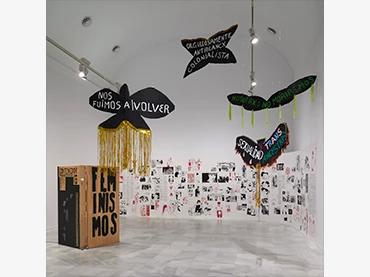
Held on 01 Feb 2022
View of Room 103.02. The Square. The Power of the Collective
March 8 has become a symbol of protest that flows beyond this date to solidify synergies and feminist, historical and present struggles. For over a century now, this day has condensed and amplified a first basic premise: rights for all women always, every single day. Over the past few decades, the feminist movement has made this demand ever more visible and global, and, from numerous corners, from the past and the present, we aspire to many more 8Ms — every single day.
The Museo’s public programmes are articulated and interwoven from a series of force lines — proposing a situated practice and a stance taken before issues that raise questions — made visible in the present year via so-called Temporary Intensity Zones (TIZs), a conceptual device which organises and concentrates a time frame of transversal connections in its activities. The 8EMES programme, distinctly feminist, denotes the first of these TIZs and gathers activities, propels cross-overs and articulates perspectives around these force lines from which the Museo works sustainedly. Feminisms permeate at once through the Museo’s programme and Collection — even more significantly after its recent rearrangement — extending the spirit of 8M beyond a stipulated date. Activated by this same idea and driven by an unceasing strength of collective protest, this programme sets forth a film series, encounters, lectures, workshops, exhibitions and gazes towards the Collection, setting out from a diverse and transversal approach.
-
From 16 to 20 February 2022 Nouvel Building, Protocol Room, Auditorium 200 and online platform
To Organise Is to Start to Prevail
Second Syndicalist Feminism Workshops
With the aim of reflecting on the notion of syndicalist feminism and thus vindicating the dynamism of new emerging struggles that pick up tools from the labour movement (strikes and strike funds), these workshops seek to weave alliances between collectives and feminist organisations, casting light not only on the difficulties faced and calling for change from institutions, but also backing rebellion and thinking jointly about strategies and forms of action which are up to the task of current challenges in a present laced with uncertainly, but also full of hope.
Organised by: Museo Reina Sofía and La Laboratoria. Espacios de Investigación Feminista
Collaboration: the Foundation for Arts Initiatives and Rosa Luxemburg Foundation -
From 11 March to 14 May 2022 Sabatini Building, Auditorium
Out of the Shadows
The Pioneering Films of Atteyat Al-Abnoudy, Selma Beccar, Assia Djebar, Jocelyne Saab and Heiny Srour
TicketsAn exploration of film-making from Mediterranean Arab countries, as rich as it is vast, offers a thought-provoking array of forms and manifestations. From the silent film era to the present today, film work from Magreb and the Mashriq has contributed a large number of standout productions to film history, yet a survey of canonical historiography casts, surprisingly, more darkness than light and is even more striking where films made by women are concerned. Despite a considerable rise in recent decades of women directors in Arab film, the work of many female pioneers regrettably tends to fall into obscurity.
Organised by: Museo Reina Sofía and the Courtisane Festival
With the support of: Arab Funds for Art and Culture (AFAC) -
Friday, 18 March 2022 Nouvel Building, Protocol Room and online platform
Situated Voices 21
Youth in Action: Responding to Racist Imaginaries. Movements and Strategies
TicketsThis encounter seeks to reflect, through young migrant and anti-racist activists, on modes to destabilise racism from an intersectional gaze. What role does racism play in the multiple forms of oppression that cross through certain bodies in relation to gender, race, class, administrative status, and so on? The aim is to collectively imagine multi-faceted, creative, political and disobedient processes which allow anti-racism to be incorporated into the heart of struggles and thereupon examine its relationship with other issues that include education, participation in politics, heteromormativity and climate justice.
Coordinated by: Red de Estrategias Antirrumores de la Región de Madrid (RAMA)
Organised by: Red de Estrategias Antirrumores de la Región de Madrid (RAMA), GRIGRI and Museo Situado
Collaboration: Madrid City Council -
Thursday, 31 March and 7 April 2022 Sabatini Building, Auditorium
Elena Asins. There Is Nothing to Understand Here
Screenings and Talk
TicketsThis Museo Reina Sofía-produced documentary approaches the unique work of Elena Asins (Madrid, 1940 — Azpirotz, Navarra, 2015), an artist who ardently explored abstract language in the field of logical thought and algebra applied to geometric abstraction. Her artistic practice — perpetually characterised by compositional rigour and formal refinement — stretches across a broad array of formats and mediums, from concrete poetry and drawing to video, via sculpture and installation. The film, resulting from research into the artist’s archive conducted over more than two years, is a multi-voiced account in which different figures seek to respond to the many questions that formulate a strict and demanding artistic practice, and which, as Javier Maderuelo highlights, is “pure mental process”. The documentary is followed by screenings of the unseen digital animation films by Elena Asins and a conversation with Javi Álvarez and Olga Sevillano, the documentary’s directors, in both sessions.
-
Saturday, 26 March 2022 Meeting Point: Sabatini Building, Floor 1, Room 103.02
The Feminisms Container
Docu-action on Feminisms and Syndicalism
RegistrationThe Contenedor de feminismos (Feminisms Container) is a sculpture and mobile archive devised and activated by artist Carme Nogueira and researchers Anxela Caramés and Uqui Permui and is part of Episode 8. Exodus and Communal Life, the final chapter in the new presentation of the Museo Reina Sofía Collection. Designed to be used in public space, the Container seeks to recover, document and make visible the history of women, feminisms and struggles in this sphere. Since 2009, different “docu-actions” — a term employed to designate an encounter or dialogue between women, on a specific theme, in public space — have been carried out in the Museo around feminism and associationist syndicalism. The materials produced from this docu-action are incorporated into the Container to become part of its archive.
-
Monday, 28 March 2022 Sabatini Building, Floor 1, Room 103.08
Luxurious Poverty
Andrea Büttner, in Conversation with Isabella Lenzi
RegistrationArtist Andrea Büttner engages in conversation with Isabella Lenzi, a curator and research fellow in the Museo’s Collections Department. Büttner’s work is part of Episode 8. Exodus and Communal Life, the final chapter in the new re-hang of the Collection. This event is organised inside the framework of a series of activations of the Collection throughout the month of March, underscoring feminist artistic practices and the work of women artists.
-
Wednesday, 30 March 2022 Sabatini Building, Floor 3
Belkis Ayón, Behind the Myth
RegistrationIn conjunction with the exhibition Belkis Ayón. Collographs, the Museo organises a tour through the show and a conversation with its curator Cristina Vives and Cuban artists Alexandre Arrechea and Luis Cabrera, both closely related to the figure of Ayón. The activity explores the artist’s short yet intensive career, shaped by plastic investigations around the Afro-Cuban secret society Abakuá, the practice of collography – an unusual printmaking technique developed by Ayón to create a unique artistic language — and the artistic and socio-cultural context of 1990s Cuba. The encounter is concluded with an activation on the process of conceiving and engraving the collograph and is conducted by Luis Cabrera.
-
From 10 February to 26 May 2022 Nouvel Building, Protocol Room
Conjugating Worlds: Multi-Species Corporealities
Across six sessions, this study group seeks to investigate alternative models in cultural and art theory, and in artistic practices, which radically challenge the relationship between animals and humans, with the notions of wild thought, human-animal coproduction and the between-zone as core topics. Conjugating Worlds: Multi-Species Corporealities is the continuation of the study group Body, Territory and Conflict, held from October 2020 to March 2021. Its thematic programme is linked to the research project The New Loss of Centre. Critical Practices in Live Arts and Architecture in the Anthropocene, funded by Spain’s Ministry of Science and Innovation.
Coordinated by: Fernando Quesada
-
Saturday, 26 March 2022 Sabatini Building, Workshops and Garden
Driving Evil Away
Closing Encounter
— Activity aimed at people participating in the study groups Driving Evil Away and Embracing Uncertainty. Driving Evil Away II
In the form of a conclusion, this activity puts forward an in-person re-encounter for people involved in the two past editions of the study group, held in 2020 and 2021. The first group, Driving Away Evil (in Spanish), addressed the pharmacologization of life and the contemporary malaise produced by neoliberal reality, and shared forms of collective and daily resistance. The second, Embracing Uncertainty. Driving Evil Away II, sought to jointly reflect on the ways in which we understand health, healing and care in the current context of the COVID-19 crisis, encouraging a pooling of experiences, emotions and knowledge. The health emergency conditioned the (re)consideration of the format and dynamics of both groups, turning virtuality into the only channel of encounter. This activity came into being with the will to “devirtualise” these groups with an in-person re-encounter as a coda.
Coordinated by: Equipo re - Anarchivo sida (Nancy Garín and Linda Valdés) and Josune Urrutia
-
Pink Triangle
LGTBQ+ Activisms in Schools
The Pink Triangle project looks to consolidate a space of convergence between different agents working in the sphere of affective-sexual diversity and gender in schools, with the aim of developing, in tune with the legislation in force, comprehensive programmes against LGTBI-phobia and discrimination based on sexual orientation and identity. Over the course of this year, and in collaboration with L’Internationale, a series of mediation materials are developed around dialogue recorded between Miguel Missé and Mercedes Sánchez Sáinz, with the aim of sharing strategies and activations in the sphere of sex-gender freedom of expression and educational work for and from difference.
-
Episode 1. Avant-garde Territories: City, Architecture, Magazines Sabatini Building, Floor 2
Women at the Forefront. Room 203.02
The modern city opened the way for the modern woman, who became a social phenomenon in the 1920s and 1930s. Yet in Spain there was no cultural framework in which to professionally contextualise women in art until well into the twentieth century, making their history tantamount to a list of exceptions with vital specific characteristics. This room contains works that represent the determinants women faced at the turn of the century, for instance La comulgante (Girl at Her First Communion, 1914), by María Blanchard, and pieces which render an account of the emancipatory spirit that had started to take shape in schools devoted to advancing women’s higher education, such as Ángeles Santos’s Tertulia (The Gathering, 1929). It also foregrounds the work of illustrators such as Pitti Bartolozzi, Rosario de Velasco and Delhy Tejero, who all employed materials widely considered second rate by historiography to build a feminist or subordinate art history.
-
Episode 4. Double Exhibition: Art and Cold War Sabatini Room, Floor 4
Body and Home. Room 419
This room presents works by two key artists related conceptually to Surrealism from Europe: Louise Bourgeois and Dorothea Tanning. Both would enter a liminal dimension, at once interior and exterior, of femininity, the body and the home, creating sharp contours to the violence of gender constructions and surveying their vicissitudes. To some degree, their treatment of the home is diametrically opposed to the American dream, where the suburban home, bright and always immaculate, is built upon an obliging and idyllic female figure taken for granted.
-
Episode 4. Double Exhibition: Art and Cold War Sabatini Room, Floor 4
Women Artists and Late Francoism. Room 427
Access to the projectDisplayed in this room are works by Mari Chordá, Ángela García Codoñer, Eulàlia Grau, Isabel Oliver and Ana Peters, artists whose careers began in the 1960s and 1970s but who, omitted from major narratives, have only started to be unearthed in recent investigations. During the last two decades of Franco’s dictatorship, women who were active in the Spanish art scene were seen as exceptions, their talent commonly belittled in critique and the media under the term “feminine”. Nevertheless, from the end of the 1960s this derogatory characterisation started to become part of the subject matter approached by many of these artists as a vindication of another kind of art-making and in resistance to Francoism.
-
Episode 8. Exodus and Communal Life Sabatini Building, Floor 1
Reasoning of the Commons. Room 103.08
New forms of governance emerge as a response from struggles against inequality, led by the search for alternative models, and perhaps pre-existing modes of exchange, with some based on the community logic that assumes the importance of existing in relation to others. This room displays works by artist Andrea Büttner which address moral or ethical issues linked to dispossession and vulnerability resulting from the structures of inequality and belief systems, such as religions, underpinning or confronting them. Her Beggars, portraits of beggars that make up one of her open strands of work, are woodcuts showing variations through the schematization of the beggar figure. The woodcut technique, unflashy and tied to folk art, establishes a parallel between artists and manual labourers: the artist as worker.
-
Episode 8. Exodus and Communal Life Sabatini Building, Floor 1
Room 103.16
This room displays Victoria Gil’s series Retratos saharauis (Sahrawi Portraits), conceived to illustrate a book of poems featuring the collaboration of different writers from Western Sahara and which sought to cast light upon the socio-political conflict. Although the series is broad and addresses issues such as the acts of resistance before eviction attempts in the camps or the use and spread of tear gas, the pieces selected in this room allow us to view the agency of communities of Sahrawi women, leading figures in the development of their society across more than four decades of exile. In her field journal, Victoria Gil depicts daily life in the camps and grants recognition to the participation of women not only in the anti-colonial struggle and the fight for the rights of the Sahrawi people until the present day, but also in leading community activities to improve co-existence and quality of life and creating education structures and promoting health in camps for displaced people.
-
Until 18 April 2022 Sabatini Building, Floor 3
Belkis Ayón
Collographs
Buy ticketsBelkis Ayón (Havana, 1967–1999), regarded as one of the foremost exponents of contemporary international printmaking in the 1990s, reached artistic maturity during the profound economic, social and ideological crisis in Cuba caused by the collapse of socialism in Europe. Ayón studied at Havana’s Instituto Superior de Arte de la Habana (ISA) from 1986 to 1991, excelling through the mastery of her large-scale collographs — via an assemblage of multiple printed sections — with their pronounced stage-like quality and great compositional complexity. Ayón used these works to build a universal discourse against marginalisation, frustration, fear, censorship, intolerance, violence, helplessness and limited freedom.
Curator: Cristina Vives
Organised by: Museo Reina Sofía, in collaboration with the Belkis Ayón Estate -
Until 2 May 2022 Retiro Park, Palacio de Velázquez
Vivian Suter
Argentinian-Swiss artist Vivian Suter (Buenos Aires, 1949) works in the middle of the Guatemalan rainforest, her practice, carried out from her studio in Panajachel, evolving towards an ever-closer exchange with nature. Wind, rain and mud act upon frameless colourist canvases in continuity with the surrounding tropical landscape. Her embrace of natural phenomena in her paintings not only erodes the notion of material hierarchy, but also shows an environmentally aware existence. Each canvas retains its own autonomy as an artwork while maintaining a close connection to the rest of the pieces, amounting to a kind of evocative ecosystem of climatic, sensorial and emotive experiences.
Curator: Manuel Borja-Villel
Organised by: Museo Reina Sofía
Collaboration: Comunidad de Madrid -
4 May - 5 September 2022 Sabatini Building, Floor 3, Vaults Room and Garden
< Jardín de las mixturas. Attempts to Make Place 1995 -…- >
Alejandra Riera
Buy ticketsJardín de las mixturas (The Garden of Mixtures) puts forward a presentation of the work of Alejandra Riera — “a series of attempts”, as she prefers to call it — across more than two decades. How can the poetic modes practiced in these attempts specifically unfold? How can they linger over long periods of time and address the density of their fabric? How can it be done by creating places that make room for the transit of anyone who approaches? The Jardín de las mixturas is not conceived as closed space and time (the exhibition room and its programmed temporality), but rather as an ensemble of unique places linked by an open narrative frame and a certain freedom of circulation.
Organised by: Museo Reina Sofía
-
From Monday to Sunday Meeting Point: Sabatini Building, Floor 1, Education Desk
Feminism. A Feminist Gaze on Avant-garde Movements
TicketsThis tour explores the spaces of the Collection devoted to historical avant-garde movements and questions women’s role and visibility in art history by means of an analysis of women as producers, recipients and subjects-objects of artistic production. It is part of a series of transversal tours that put forward new gazes of the Collection, questioning traditional interpretations and revealing the wealth of historical, social and political ramifications of artistic activity. It seeks to ignite a new gaze, to critically consider images of male domination and to prompt recognition of women’s work in overcoming roles and models.
-
From Monday to Sunday, starting on 30 March 2022 Meeting Point: Sabatini Building, Floor 1, Education desk
Making Space or Wandering from Disorientation
TicketsThe issue of space became visible on the artistic landscape after the Second World War with the rise of performance and its hybrids with dance, installation and reformulations around the support and materiality of artworks. This would affect not only art-making but also people situated inside the art system — Who occupies this space? — and those off-centre. In this meandering tour, taking in Episodes 2, 3 and 4 of the Collection, participation is encouraged in a relational practice with mediators and the rest of the group in an attempt to dismantle the idea of someone “who explains things” and form plural voices that will nurture word and listening from feminist perspectives.
-
Multimedia
Actions Speak Louder Than Words
Interview with Charlotte Johannesson
Watch videoArtist Charlotte Johannesson (Malmö, 1943) is a pioneer of digital graphic art and an early exponent of the conceptual synchrony between languages and the technique of IT programming and the loom. This interview, in conjunction with the monographic exhibition held in the Museo Reina Sofía in 2021, sees Johannesson weave together a tapestry of personal experience with her early approach to textiles, memories of political protest from the counterculture scene and her artistic practice at the inception of digital art.
-
Podcast
Belkis Ayón: Between Utopias
Interview with Cristina Vives
Listen to the podcastIn this sound podcast, researcher, editor and art critic Cristina Vives (Havana, 1955) presents the short yet prolific career of Belkis Ayón (Havana, 1967–1999). Vives, curator of the first retrospective of the printmaker in Europe, held in the Museo Reina Sofía, surveys the narrative of the artistic journey undertaken by her friend, exploring Ayón’s work with collographs as a unique language, her interest in the Afro-Cuban secret society Abakuá and her political commitment in the context of 1990s Cuba.
-
Podcast
Time has fallen asleep in the afternoon sunshine
Mette Edvardsen, Memory and Living Books
Listen to the podcastDystopian fiction, such as Ray Bradbury’s Fahrenheit 451, and real experiences, for instance Anna Ajmátova’s memorisation of her own poems in an attempt to avoid censorship, have inspired Time has fallen asleep in the afternoon sunshine, a proposal by performer and choreographer Mette Edvardsen. The project sees people from different countries memorise books with a view to creating a library of “living books” made available to the public in the form of common encounters in which they recite what they have learned. This double podcast offers an interview with Edvardsen as she recounts the beginnings of the project and its development over the years, and a conversation with Violeta Gil and Andrea Rodrigo, who narrate their experiences of these living books.
-
Podcast
Weaving a Blanket of Snow
Four “Tamo Evenings” with Eva Lootz
Listen to the podcastAcross four summer evenings, a group of participants learned to make string figures with their hands in a workshop conducted by artist Eva Lootz (Vienna, 1940). The string forms enable an exploration with knots and intertwining threads to relate body, memory and language; figures that can be undone and started again in another form. In this podcast, Lootz entwines a narration that begins from the outset of her artistic career and losing herself in a play with raw materials, memory, history and landscape.
Más actividades

Difficulty. Forms and Political Effects of Deviation in Writing and Contemporary Art
23 February – 14 December 2026 – Check programme
Difficulty. Forms and Political Effects of Deviation in Writing and Contemporary Art is a study group aligned towards thinking about how certain contemporary artistic and cultural practices resist the referentiality that dominates the logics of production and the consumption of present-day art. At the centre of this proposal are the concepts of difficulty and deviation, under which it brings together any procedure capable of preventing artistic forms from being absorbed by a meaning that appears previous to and independent from its expression. By ensuring the perceptibility of their languages, difficulty invites us to think of meaning as the effect of a signifying tension; that is, as a productive and creative activity which, from the materiality of art objects, frees aesthetic experience from the representational mandate and those who participate in it from the passiveness associated with tasks of mimesis and decoding.
The economy of the referential norm translates the social logic of capitalism, where insidious forms of capturing subjectivity and meaning operate. In the early 1980s, and adopting a Marxist framework, poet Ron Silliman highlighted how this logic entailed separating language from any mark, gesture, script, form or syntax that might link it to the conditions of its production, rendering it fetichised (as if without a subject) and alienating its users in a use for which they are not responsible. This double dispossession encodes the political strategy of referential objectivity: with no subject and no trace of its own consistency, language is merely an object, that reality in which it disappears.
The political uses of referentiality, more sophisticated today than ever before, sustain the neoliberal-extractivist phase of capitalism that crosses through present-day societies politically, economically and aesthetically. Against them, fugitive artistic practices emerge which, drawing from Black and Queer studies and other subaltern critical positions, reject the objective limits of what exists, invent forms to name what lies outside what has already been named, and return to subjects the capacity to participate in processes of emission and interpretation.
Read from the standpoint of artistic work, the objective capture of referentiality may be called transparency. Viewed from a social contract that reproduces inequality in fixed identity positions, transparent in this objectivity are, precisely, the discourses that maintain the status quo of domination. Opposite the inferno of these discourses, this group aims to collectively explore, through deviant or fugitive works, the paradise of language that Monique Wittig encountered in the estranged practices of literature. For the political potency of difficulty — that is, its contribution to the utopia of a free language among equals — depends on making visible, first, its own deviations; from there, the norm that those deviations transgress; and finally, the narrowness of a norm which in no way exhausts the possibilities ofsaying, signifying, referring and producing a world.
From this denouncement of referential alienation, fetishisation and capture, Difficulty. Forms and Political Effects of Deviation in Writing and Contemporary Art turns its attention to the strategies of resistance deployed by contemporary artists and poets. Its interest is directed towards proposals as evidently difficult or evasive as those of Gertrude Stein, Lyn Hejinian, Theresa Hak Kyung Cha, Kameelah Janan Rasheed, Kathy Acker, María Salgado and Ricardo Carreira, and as seemingly simple as those of Fernanda Laguna, Felix Gonzalez Torres and Cecilia Vicuña, among other examples that can be added according to the desires and dynamics of the group.
The ten study group sessions, held between February and December, combine theoretical seminars, work with artworks from the Museo Reina Sofía’s Collections and exhibitions, reading workshops and public programs. All these formats serve as spaces of encounter to think commonly about certain problems of poetics — that is, certain political questions — of contemporary writing and art.
Difficulty. Forms and Political Effects of Deviation in Writing and Contemporary Art inaugurates the research line Goodbye, Representation, through which the Museo Reina Sofía’s Studies Directorship seeks to explore the emergence of contemporary artistic and cultural practices which move away from representation as a dominant aesthetic-political strategy and redirect their attention toward artistic languages that question the tendency to point, name and fix, advocating instead for fugitive aesthetics. Over its three-year duration, this research line materializes in study groups, seminars, screenings and other forms of public programming.

CLINIC 2628. A Community of Writing and Research in the Arts
February – October 2026
Clinic 2628 is a project which supports and brings together writings which stem from the intention to offer a space and sustainable time for research work in art and culture. Framed within an academic context which is increasingly less receptive to the forms in which thinking happens and is expressed, the aim is to rescue the academic from its neoliberal trappings and thus recover the alliance between precision and intuition, work and desire. A further goal is to return writing to a commons which makes this possible through the monitoring of processes and the collectivisation of ideas, stances, references and strategies.
The endeavour, rooted in a collaboration between the Museo Reina Sofía’s Studies Directorship and the Artea research group, via the i+D Experimenta project, is shaped by three annual editions conceived as spaces of experimentation, discussion and a demonstration of writings critical of what is put forward by today’s academia.
What forces, forms and processes are at play when writing about art and aesthetics? In academia, in museums and in other cultural institutions, the practice of writing is traversed by productivist logics which jeopardise rhythms of research and experimentation. The imposition of both scientism inherent in the structure of “the paper” and the quantifying of results which demand a criterion of quality and visibility sterilise and smoothen, from the outset, the coarseness that is particular to writing understood from the concrete part of language: phonic, graphic, syntactic and grammatical resistance connecting the language user to the community the language unites and activates. They also sterilise the roughness enmeshed in the same desire to write, the intuitive, clear and confusing pathways that once again connect the writer to those reading and writing, participating in a common good that is at once discovered and produced.
The progressive commercialisation of knowledge propelled by cognitive capitalism moves further away from the research and production of knowledge in artworks and artistic languages and practices. The work of curators and archive, criticism, performances and essays formerly saw a horizon of formal and emotional possibilities, of imagination that was much broader when not developed in circumstances of competition, indexing and impact. Today, would it be possible to regain, critically not nostalgically, these ways; namely, recovering by forms, and by written forms, the proximity between art thinking and its objects? How to write in another way, to another rhythm, with no more demands than those with which an artwork moves towards different ways of seeing, reading and being in the world?
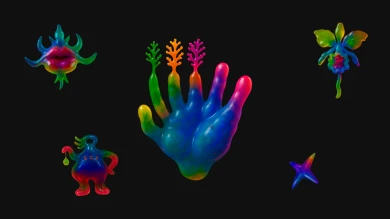
Cultural Work
Thursday, 12 February 2026 – 5:30pm
This series is organised by equipoMotor, a group of teenagers, young people and older people who have participated in the Museo Reina Sofía’s previous community education projects, and is structured around four themed blocks that pivot on the monstrous.
Session number two looks to approach film as a place from which cultural work is made visible and processes of production engage in dialogue with artistic creation. From this premise, the session focuses on exploring how audiovisual content is produced, assembled and distributed, from the hands that handle the images to the bodies that participate in its circulation. The aim is to reflect on the invisible effort, precarity and forms of collaboration that uphold cultural life, that transform the filmic experience into an act that recognises and cares for common work.
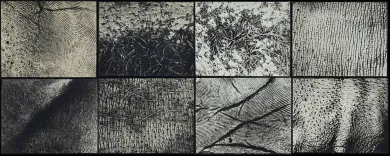
The (legal) person and the legal form. Chapter II
8, 12, 15 January, 2026 – 16:00 to 19:00
As part of the Studies Constellation, the Study Directoship’s annual fellowship, art historian and theorist Sven Lütticken leads the seminar The (Legal) Person and the Legal Form: Theoretical, Artistic, and Activist Commitments to foster dialogue and deepen the hypotheses and questions driving his research project.
This project, titled Unacting Personhood, Deforming Legal Abstraction, explores the dominance of real abstractions—such as exchange value and legal form—over our processes of subjectivation, and asks how artistic practices can open up alternative ways of representing or performing the subject and their legal condition in the contemporary world.
The seminar consists of eight sessions, divided into three chapters throughout the academic year. While conceived as non-public spaces for discussion and collective work, these sessions complement, nourish, and amplify the public program of the Studies Constellation.
In this second chapter of the seminar, the inquiry into the aesthetics and politics of legal form continues with three sessions that pick up the discussions held in Chapter I but propose new lines of flight. The first session focuses on international law via the writings of the British author China Miéville, which allows us to reconsider the notion of the legal form –following Evgeny Pashukanis— and, through it, a variety of (people’s) tribunals. While the crucial concept of the legal person –as the right-holder central to the form of law— was debated in Chapter I, the second session focuses on attempts to extend personhood not (just) to corporations, but rather to nonhuman animals or ecosystems. Finally, the third session poses the question: how can groups and networks use officially recognized organizational forms (such as the foundation or the cooperative) and/or use a collective persona (without necessarily a legal “infrastructure” to match) to act and represent themselves?

Oliver Laxe. HU/هُوَ. Dance as if no one were watching you
Tuesday, 16 December 2025 – 7pm
As a preamble to the opening of the exhibition HU/هُوَ. Dance as if no one were watching you, film-maker Oliver Laxe (Paris, 1982) engages in conversation with the show’s curators, Julia Morandeira and Chema González, touching on the working processes and visual references that articulate this site-specific project for the Museo Reina Sofía. The installation unveils a new programme in Space 1, devoted from this point on to projects by artists and film-makers who conduct investigations into the moving image, sound and other mediums in their exhibition forms.
Oliver Laxe’s film-making is situated in a resilient, cross-border territory, where the material and the political live side by side. In HU/هُوَ. Dance as if no one were watching you, this drift is sculpted into a search for the transcendency that arises between dancing bodies, sacred architectures and landscapes subjected to elemental and cosmological forces. As a result, this conversation seeks to explore the relationship the piece bears to the imagery of ancient monotheisms, the resonance of Persian Sufi literature and the role of abstraction as a resistance to literal meaning, as well as looking to analyse the possibilities of the image and the role of music — made here in collaboration with musician David Letellier, who also works under the pseudonym Kangding Ray — in this project.
These inaugural conversations, part of the main working strands of the Museo’s Public Programmes Area, aim to explore in greater depth the exhibition narratives of the shows organised by the Museo from the perspective of artists, curators and specialists.
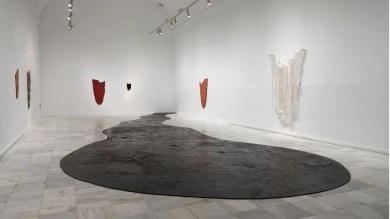
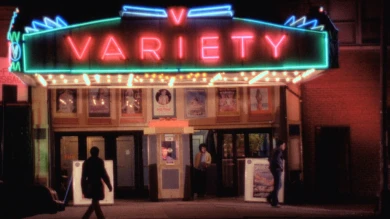
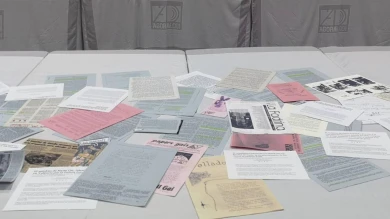
![Miguel Brieva, ilustración de la novela infantil Manuela y los Cakirukos (Reservoir Books, 2022) [izquierda] y Cibeles no conduzcas, 2023 [derecha]. Cortesía del artista](https://recursos.museoreinasofia.es/styles/small_landscape/public/Actividades/ecologias_del_deseo_utopico.jpg.webp)
![Ángel Alonso, Charbon [Carbón], 1964. Museo Reina Sofía](https://recursos.museoreinasofia.es/styles/small_landscape/public/Actividades/perspectivas_ecoambientales.jpg.webp)